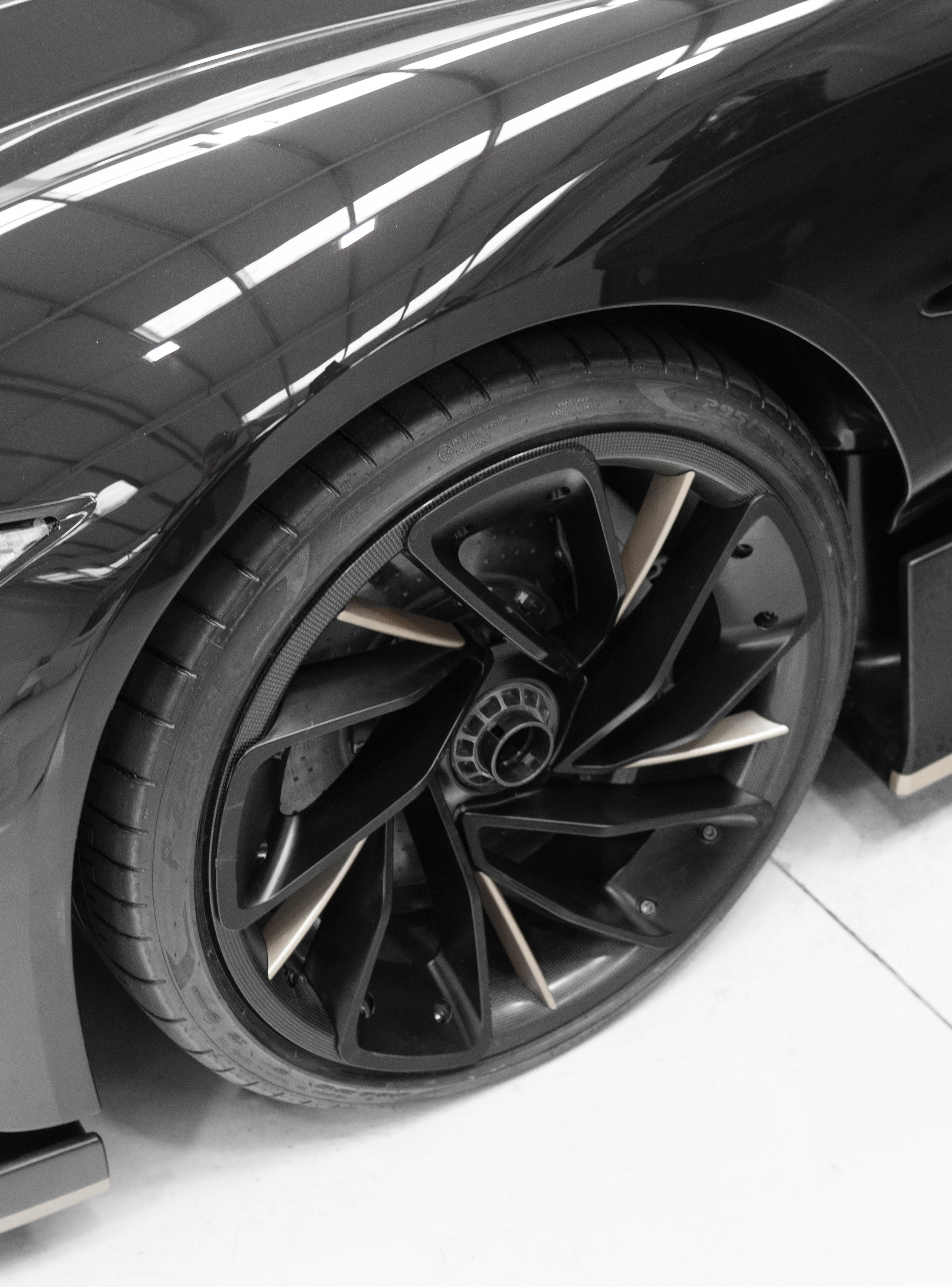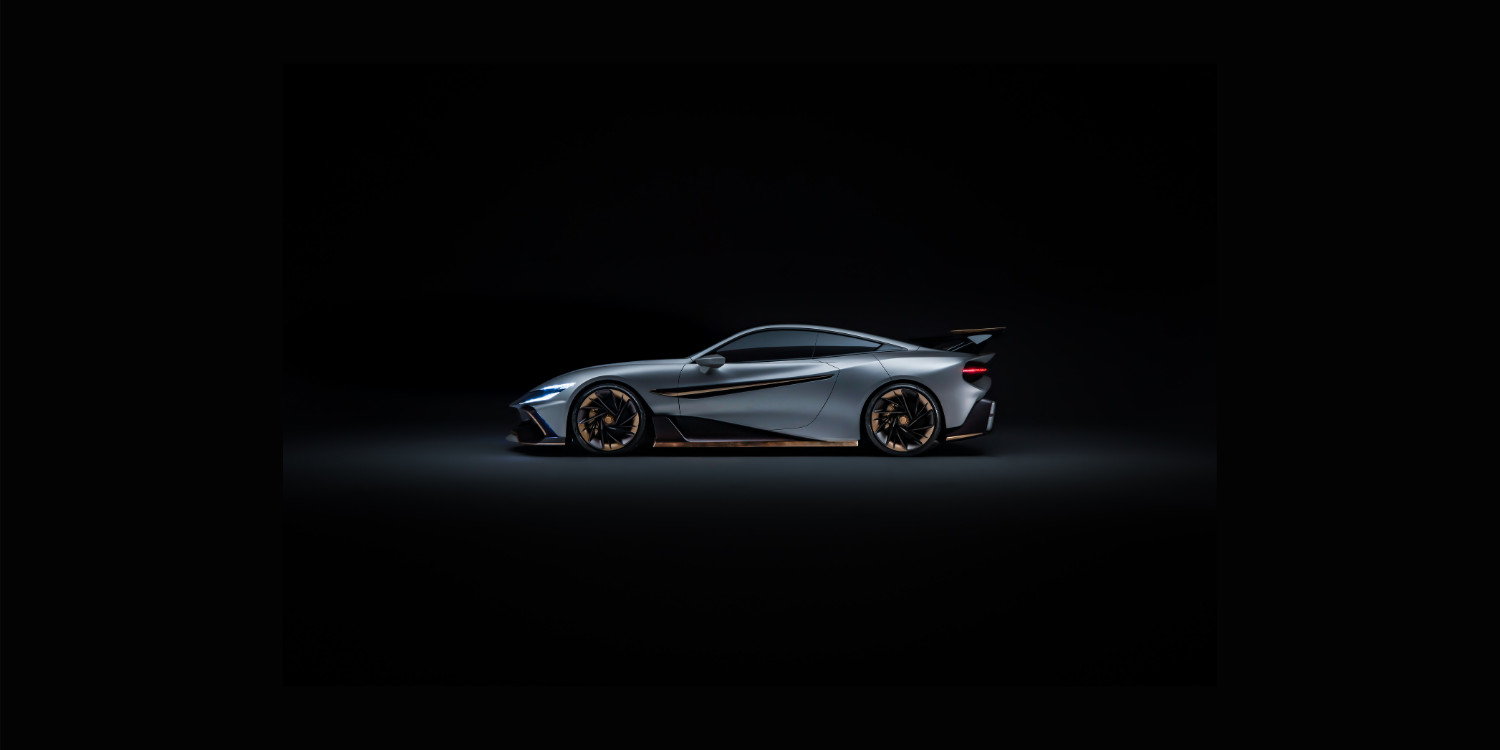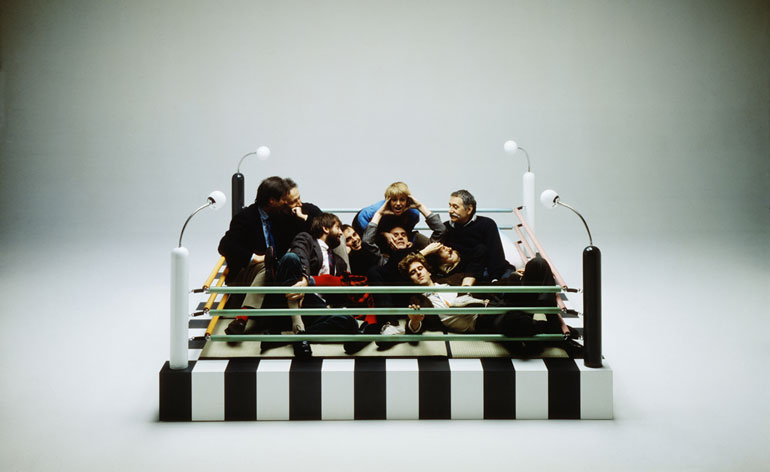Naran hyper coupé signals new car brand Naran Automotive’s fresh approach
Ameerh Naran, CEO of Naran Automotive, believes his forthcoming high-performance four-seater Naran hyper coupé will shake up the world of collectable hypercars

The act of building a car that bears one’s own name has driven industrialists, engineers and entrepreneurs since the dawn of the auto industry. Right now, the big growth in new brands remains in the highest strata of automotive art, the supercars and hypercars that are built in limited-edition handfuls to complement the collections of a rarefied kind of buyer.
Ameerh Naran wants to be part of that club. Founder and CEO of the car company that bears his name, Naran Automotive, the British businessman is gearing up to release the prototype of his very first machine, known for now as the Naran hyper coupé. Unusually for this sector, the car is a four-seater, the resolution of a childhood dream to create a car. Naran is the founder of successful charter company Vimana Private Jets, giving him a solid footing on which to assemble an automotive team. We spoke to the entrepreneur about the origins of the brand, the tech behind the hyper coupé and his hopes for the future.
Naran hyper coupé: the birth of a new hypercar

Wallpaper*: How long have you been planning to enter the world of car making?
Ameerh Naran: Since my earliest memories around age four, the dream to build a car has always been a constant. When I turned 14, I took my first proactive step by reaching out to industry giants Ian Callum [former Jaguar creative director and now behind Callum Design's Callum Skye] and Adrian Van Hooydonk [head of BMW Group Design]. Their responses went beyond mere encouragement; they helped guide me to formulate a strategic plan to bring my dream to fruition. I was also inspired by the 2011 Pagani Huayra, especially its active aerodynamics.
This was a design concept I had already been thinking about myself and which I had actually discussed with Ian Callum during our first correspondence. The fact that I was having these mutual design ideas was really exciting, so I contacted Ian and Horacio Pagani, which led to an amazing invitation to visit both factories. I studied Industrial & Product Design with the aim of doing a postgraduate degree in vehicle design. However, racing commitments and other business opportunities shifted my trajectory. Instead, I founded Vimana Private Jets and have been working 24/7 to build a prosperous business, quietly laying the groundwork for my automotive project.

W* What's the platform beneath the hyper coupé?
AN: The Naran car boasts a bespoke chassis and powertrain; specific details aren’t being revealed just yet. Expect specs that redefine the game. In basic terms, we’re looking at a four-seater car delivering around 1,000hp and a 0-60mph time of under 2.5 seconds. The car will have a five-litre, twin-turbo V8 engine and an eight-speed gearbox delivering power to all four wheels. It will also boast a raft of automotive industry ‘firsts’ in terms of innovations, including our own flax hybrid carbon-fibre wheels.
Receive our daily digest of inspiration, escapism and design stories from around the world direct to your inbox.

W* Who was responsible for the design of the car?
AN: The aesthetic identity of the Naran car has been meticulously crafted. The design needed a seamless collaboration between my own design vision and the expertise of a skilled car designer. I hired Wyn Design, an easy choice based on my admiration for their work on the Apollo IE and De Tomaso. The design team was tasked with translating my design concept onto paper, capturing every nuance and detail. I wanted it to be a fusion of creativity and technical precision and this collaborative design process made that possible.

W*: Tell us about the vision for the car
AN: From the outset, my vision for the car was clear – an elegant, four-seater, GT3-inspired hyper coupé. I wanted to marry front-engine dynamics with rear-wheel-drive agility, because I felt that this was the most engaging layout of supercars that I had driven to date. The concept was also driven by my desire to share the exhilarating driving experience with more than just one companion or passenger, and that became a defining aspect of the car. The experience inside the cabin was equally important. Drawing on my own aesthetic as a keen car collector, as well as a good knowledge of luxury world travel, the car’s interior became like a canvas for innovation.
We collaborated with designer Kate Montgomery, whose expertise spans automotive, aviation and yacht design and we endeavoured to create a simplified yet refined and very personalised interior. The vision was to elevate the car’s cabin above the fairly standardised offering in the supercar market. With that in mind, we’ve sourced both organic and truly luxe materials to make the in-car experience for both the driver and passengers truly unforgettable.

W* Who do you think your main competitors are in this sector of the market?
AN: I’ve deliberately looked to carve out a standalone space for Naran. And so, it is designed to stand unrivalled, defying conventional categorisations. I know that comparisons with marques like Bugatti and Koenigsegg are inevitable due to pricing, but I feel that the essence of our car transcends typical market dynamics. It's not merely an automotive purchase; it's an acquisition more like investing in a rare piece of art or a meticulously crafted collector's item.
We’re not just vying for a spot in a garage alongside other cars; the competition steps beyond the automotive world to include yachts, luxury travel and experiences. It's about creating an emotional connection where Naran becomes an integral part of an owner's collection.

W* Where do you plan to manufacture the car?
AN: Naran is an international project, with engineering work taking place in Germany, the USA, and the UK. We’ve drawn inspiration from design and build processes such as the meticulous process of yacht building and the craftmanship of analogue, manual mechanical movements in high-end timepieces. I believe we have succeeded. The company is in the process of securing a dedicated UK facility for further development in the years to come.

W* What is Naran's unique selling point that distinguishes it from its rivals?
AN: From my very first vision, I wanted Naran to represent a paradigm shift in automotive design and craftsmanship. What sets the Naran apart is a meticulously crafted ethos that transforms every drive into an intense and thrilling experience, a genuine occasion. The concept was always based on a commitment to simplicity, to distance us from the overly digitised norms of today, to take us back to the golden era of non-digitalised craftsmanship.
And we have achieved this. The car embodies a brutality that resonates with those seeking a true driver’s adrenaline fix but also a beauty that evokes the driving experience of the supercars of yesteryear. Our objectives of track performance while accommodating three other passengers create a unique offering in the market. Naran isn't just a car; it's a visceral experience. The simplicity of the user interface is a deliberate departure from today's digital noise. It's a return to the raw, unfiltered joy of driving – a sentiment lost in the mainstream.
Jonathan Bell has written for Wallpaper* magazine since 1999, covering everything from architecture and transport design to books, tech and graphic design. He is now the magazine’s Transport and Technology Editor. Jonathan has written and edited 15 books, including Concept Car Design, 21st Century House, and The New Modern House. He is also the host of Wallpaper’s first podcast.
-
 The new Tudor Ranger watches master perfectly executed simplicity
The new Tudor Ranger watches master perfectly executed simplicityThe Tudor Ranger watches look back to the 1960s for a clean and legible design
-
 This late-night hangout brings back 1970s glam to LA’s Sunset Boulevard
This late-night hangout brings back 1970s glam to LA’s Sunset BoulevardGalerie On Sunset is primed for strong drinks, shared plates, live music, and long nights
-
 How Memphis developed from an informal gathering of restless creatives into one of design's most influential movements
How Memphis developed from an informal gathering of restless creatives into one of design's most influential movementsEverything you want to know about Memphis Design, from its history to its leading figures to the pieces to know (and buy)